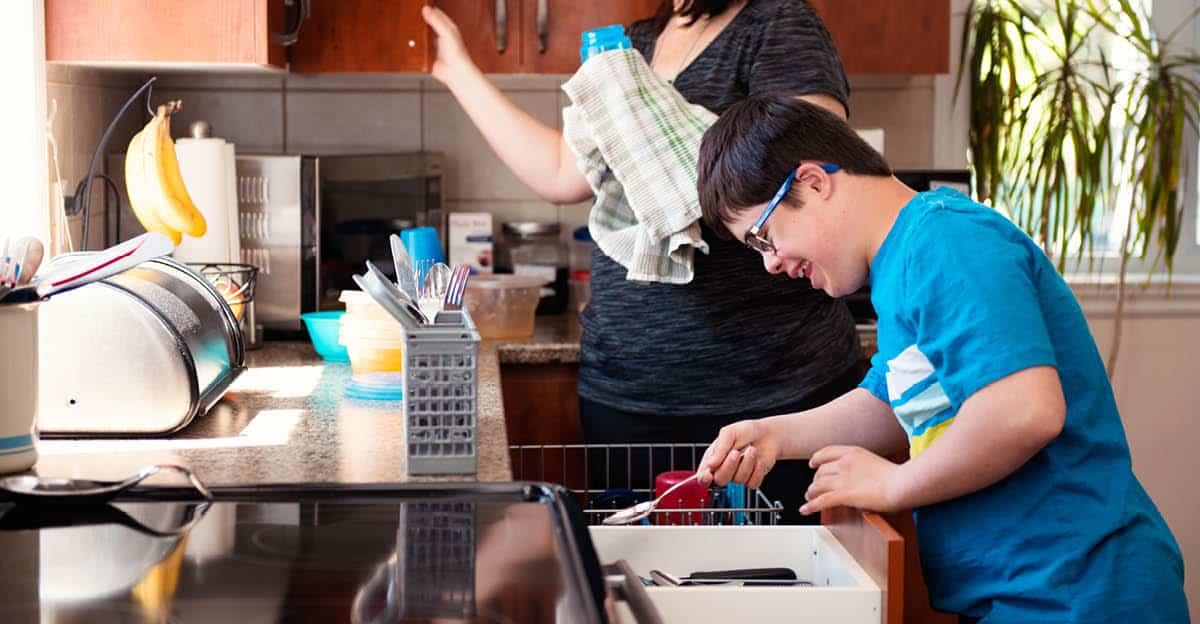Summer Break is around the corner and kids are starting to anticipate the change in schedule. There are some terrific solutions that can help children with special needs (or any child for that matter) transition smoothly from school to home at the end of the school year.
5 Ways to Help Kids with Special Needs Transition to a Summer Schedule
Though not every solution matches everyone’s particular lifestyle or family, there are tools that may help. Test different tools to see which one is the most effective and try using a regulation tool or emotional regulator to measure success.
Sensory Space
If a child has a lot of trouble with transitions, a sensory space may be just the solution and one to can use all summer long. Providing a space in the home with controlled lighting and sound and comfortable beanbag chairs or crash pads can allow children to relax at intervals during the day.
The sensory space may also include items for movement, compression, play or exercise, and heavy work. Using weighted balls or other weighted items can also be a part of the sensory room experience. Consider creating a sensory room or sensory spot that can be used all summer long. Another option is a portable sensory box with tools to pull out as needed.
Play
Summer is a great time to get outdoors and play. If there is a swing set, consider a hammock swing, special needs swing, or just a standard belt swing. Children can also use a trampoline.
Both swinging or jumping will get blood pumping and boost endorphin levels. Playgrounds and swimming pools not only provide a great workout and play area but are also terrific for building social skills as well.
Eye-Hand Coordination
Playing a game of catch with just about any ball or enrolling in summer sports camps like soccer, basketball, or baseball is great for the entire body and can really assist with the school-to-summer transition. Though we don’t suggest over-scheduling, the opportunity to be involved in a sport greatly benefits social skills, academic skills, and overall well-being.
For kids who have more trouble with ball sports, activities like gymnastics, dance, karate, or swimming can prove to be just as beneficial. And for those who prefer to be less scheduled, a home game of catch can bring tremendous eye-hand coordination benefits as well.
Chores
Chores should be a part of every child’s daily life and the summer is a great time to set this up. Chores not only build up muscle but they teach responsibility, heavy work, and cooperation. They strengthen the “effort” muscles.
Don’t be too concerned about the quality of the work. Just push for consistency. Some suggestions are taking out the garbage, bringing garbage cans back to the house, doing laundry (or parts of it), sweeping, or vacuuming.
Make a List
Give children a list of their daily summer responsibilities. It can include summer reading work, chores, activities, practices, etc. It’s important that they are part of making and monitoring the list.
The list tool is extremely important for children with ADD, ADHD, Sensory Processing Disorder, Executive Functioning Disorder, or those on the Autism spectrum. The list can have anywhere from two to seven items depending on their ability and age. Consider using a visual image list for non-readers.
More Summer Learning Opportunities & Tips
Summer provides many opportunities that are different than the traditional school year. Students can grow in areas of strength and learn new skills often unavailable during traditional classroom time.
Shop: Special Needs Tools & Solutions
Cecilia Cruse
Cecilia Cruse, MS, OTR/L has a BS degree in Occupational Therapy from the University of Florida, and her Master’s degree in Education from Georgia State University. She is SIPT certified and has over 25 years of experience in pediatrics with school-based services, acute care, and outpatient pediatric settings.







Leave a Reply